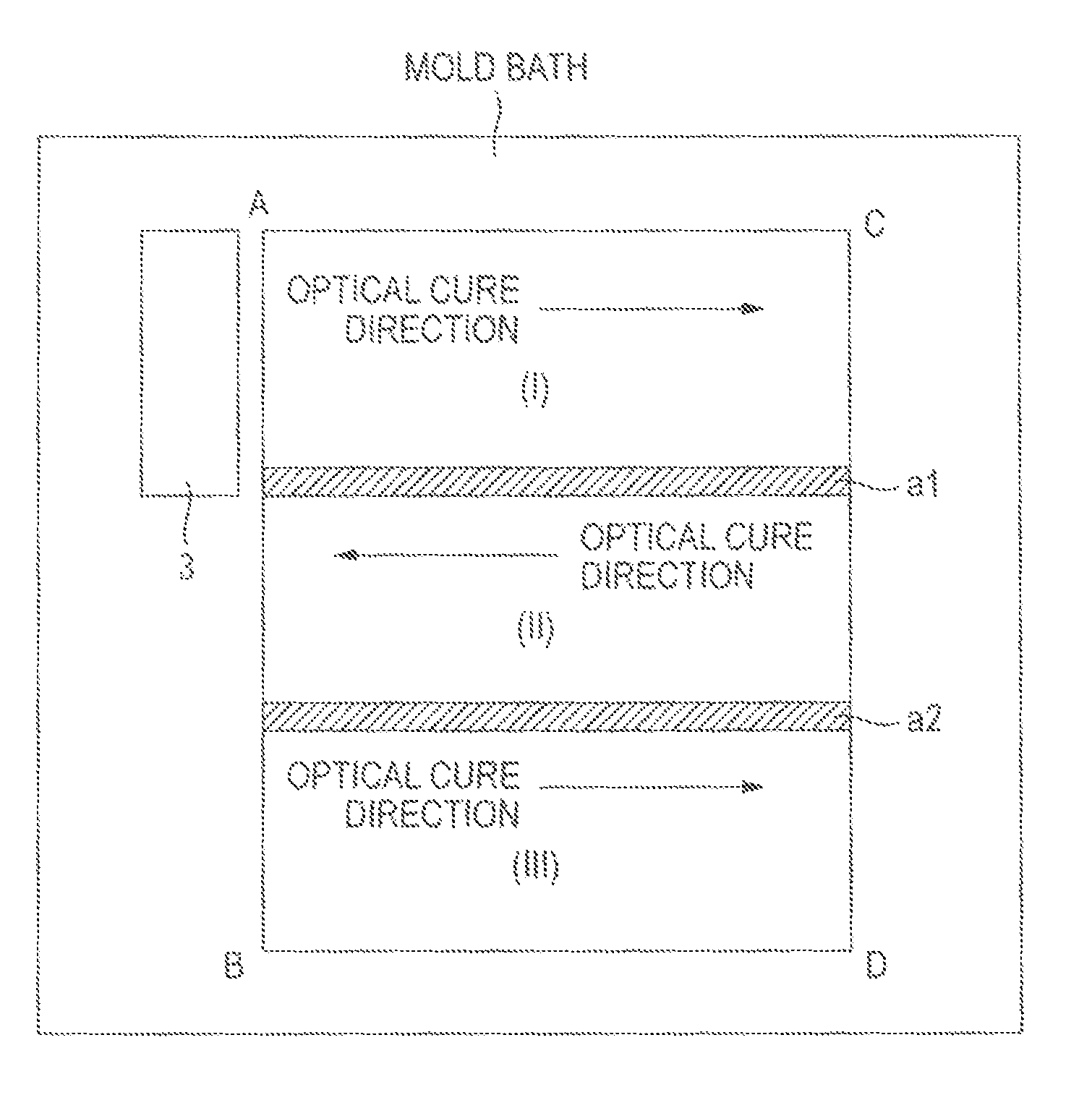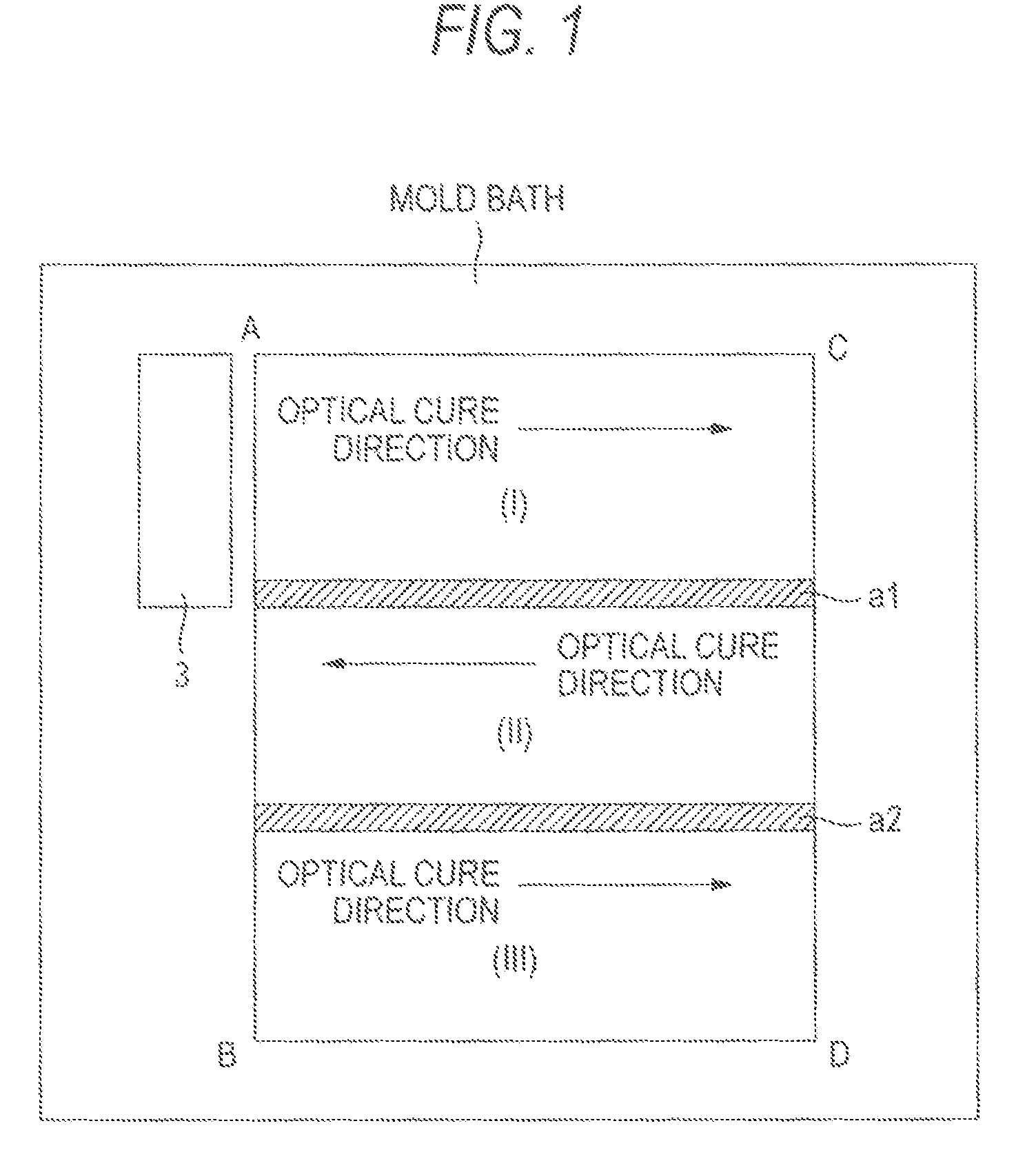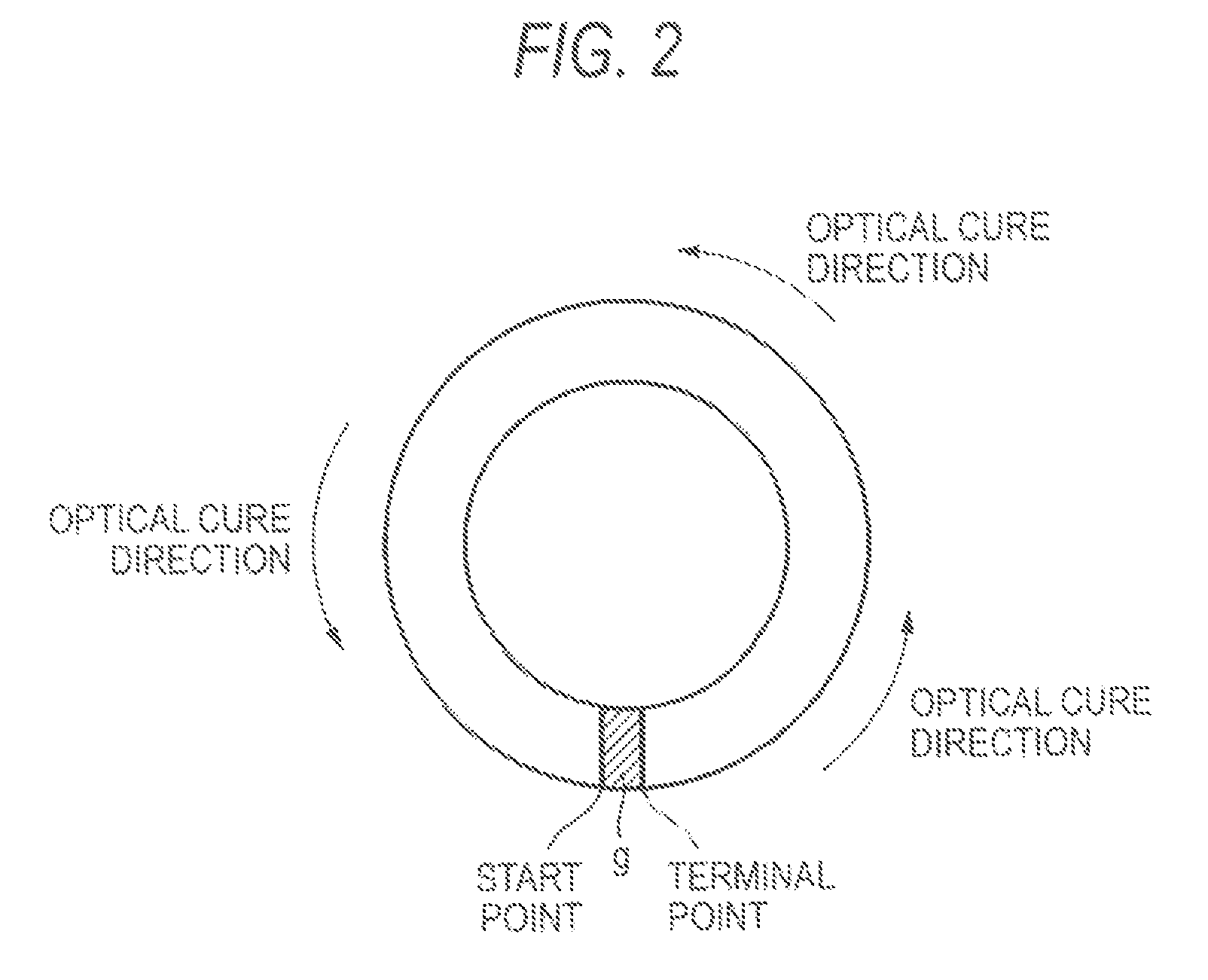Stereolithographic method and apparatus
a stereolithographic and method technology, applied in auxillary shaping apparatus, manufacturing tools, additive manufacturing, etc., can solve the problems of high cost of uv laser system used as light source, high cost of stereolithographic apparatus of this type, and high labor intensity, and achieve high building accuracy, high building efficiency, and superior appearance and dimensional accuracy.
- Summary
- Abstract
- Description
- Claims
- Application Information
AI Technical Summary
Benefits of technology
Problems solved by technology
Method used
Image
Examples
embodiments
[0108]The present invention will be described specifically hereinbelow by reference to the drawings. However, the present invention is not limited to the illustrated embodiments.
[0109]FIGS. 5 to 8 show specific examples of the principal sections of a stereolithographic apparatus (an optical building apparatus) used in the stereolithographic method (the optical building method) of the present invention. FIG. 9 shows processes (operation procedures) required when optical building is performed according to the method of the present invention by use of the optical building apparatus such as that shown in FIGS. 5 to 8.
[0110]In FIGS. 5 to 9, reference numeral 1 designates a light source; 2 designates a light-condensing lens; and 3 designates a planar plotting mask. Of the planar plotting mask, reference numeral 3a designates a planar plotting mask (hereinafter sometimes called a “liquid-crystal planar plotting mask”) where a liquid-crystal shutter is arranged in a planar manner; and 3b de...
first embodiment
[0130]An optical building apparatus, which is shown in FIG. 5 and has a 120 W extra high voltage mercury lamp as the light source 1 and a liquid-crystal of TFT-type VGA (640·480 pixels) manufactured by Casio Computer Co., Ltd., is used. Further, CPX-1000 (a curing sensitivity of 2.5 mJ) manufactured by CMET Inc. is used as a photocurable resin composition. Under the conditions of a (rectangular) projection size of 28.8 mm (in the advancing direction of the apparatus)·38.4 mm (in the direction orthogonal to the advancing direction) on the building surface 5 (the surface of the photocurable resin composition) and a light energy intensity of 2.5 mW / cm2 on the building surface 5, the light source 1, the rod lens 8, the imaging lens 9, the reflection mirror 10, the light-condensing lens 2, the planar plotting mask 3, and the projection lens 4 are continuously moved, in an integrated fashion, in the advancing direction in parallel to the building surface 5 at a speed of 28.8 mm / sec. Durin...
PUM
| Property | Measurement | Unit |
|---|---|---|
| area size | aaaaa | aaaaa |
| size | aaaaa | aaaaa |
| particle size | aaaaa | aaaaa |
Abstract
Description
Claims
Application Information
 Login to View More
Login to View More - R&D
- Intellectual Property
- Life Sciences
- Materials
- Tech Scout
- Unparalleled Data Quality
- Higher Quality Content
- 60% Fewer Hallucinations
Browse by: Latest US Patents, China's latest patents, Technical Efficacy Thesaurus, Application Domain, Technology Topic, Popular Technical Reports.
© 2025 PatSnap. All rights reserved.Legal|Privacy policy|Modern Slavery Act Transparency Statement|Sitemap|About US| Contact US: help@patsnap.com



